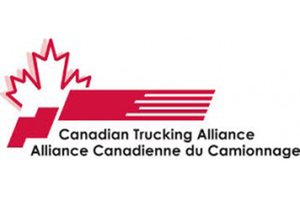CTA: The Canadian Trucking Alliance (CTA) advocates that any new carbon targets for new heavy-duty vehicles must be based the recognition Canadian and US trucking industries operate very different fleets, with Canadian trucks being more efficient than the U.S. in carrying capacity and configuration allowances. With its release of the proposed Phase II regulation, Environment and Climate Change Canada is now prepared to enshrine this important distinction into regulation.
‘The Environmental Regulation recognizes this fact by creating a new CO2 vehicle emission standard called heavy-line haul tractors,” said CTA VP of Operations Geoff Wood. “The existence of this category recognizes load maximization and other efficiencies as it assists the Canadian trucking industry in hitting its GHG emission targets through new technologies.”
CTA will be working with Environment and Climate Change Canada during the consultative stage of the regulation to explore the department’s willingness to expand coverage of the heavy-line haul tractors to those units operating between 80,000-120,000 lbs.
The balance of the regulation is for the most part in alignment with the EPA Phase II rule released in 2016. As in the U.S., Canada is also introducing regulatory controls for trailers which will include mandatory low rolling resistance tires; tire pressure monitoring or automatic tire inflation systems.
However, CTA has expressed safety concerns with the idea of mandating certain tire technologies as some tire systems are unsafe for winter weather operations. Furthermore, requiring certain technologies would rob carriers of their ability to spec vehicles based on their own operational experience and expert knowledge.
“Regulating tire selection is a tricky business,” said Wood. “We are happy the new recall bill S2 will assist with some of these issues; but our concerns remain that tires need to be spec’d for both safety and the environment. No one policy objective should trump the other.”
CTA expects Transport Canada’s new tire market survey, currently in the planning stages, to assist in achieving the necessary balance between traction and fuel efficiency while guiding responsible regulation.
Examples of other advanced tractor technologies that will qualify as carbon reducing under the new regulation, include: idle reduction technology, predictive cruise control, speed limiters, and driveline, axle and transmission efficiencies.
“CTA has been pushing for a so-called living regulation that includes newer technologies that go beyond aerodynamic improvements. The new regulation recognizes the need to embrace such technologies,” added Wood.
To learn more about CTA’s SMART approach to GHG regulations, click here.


